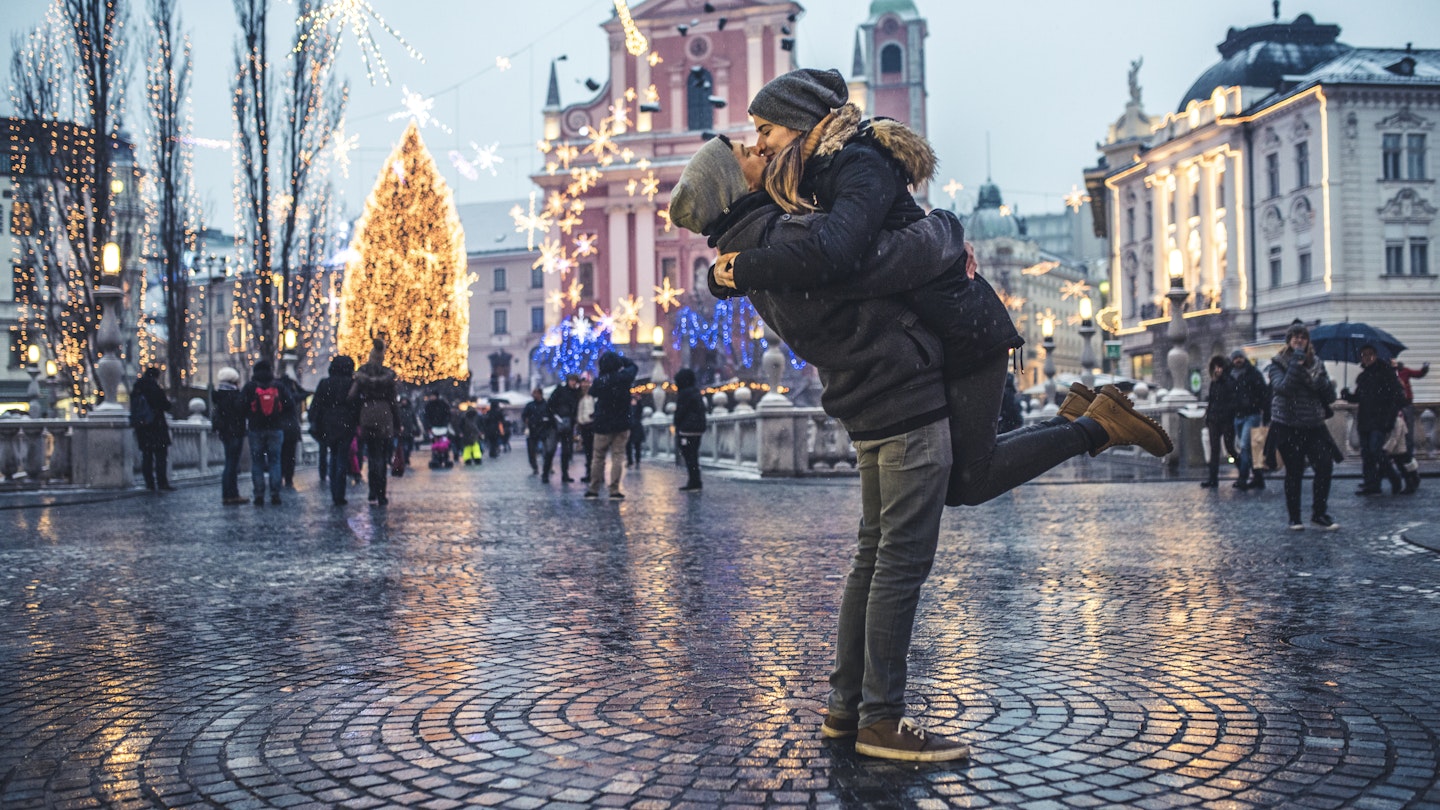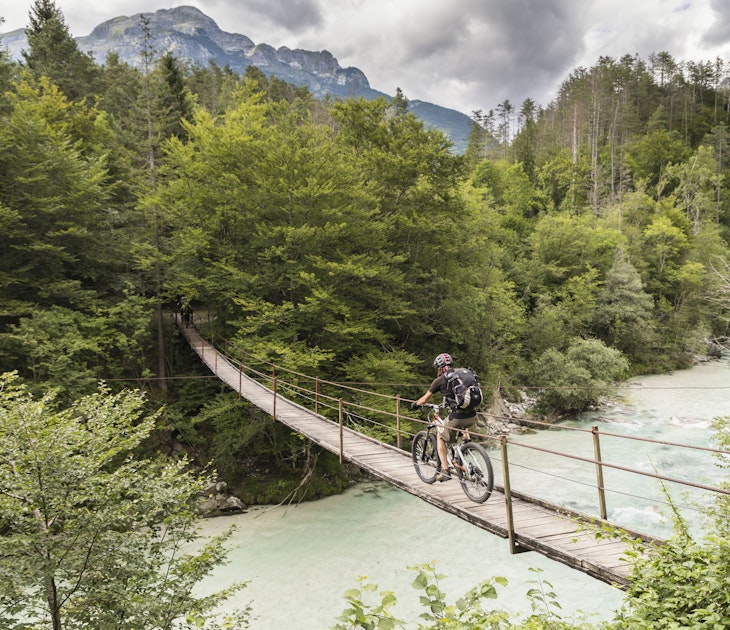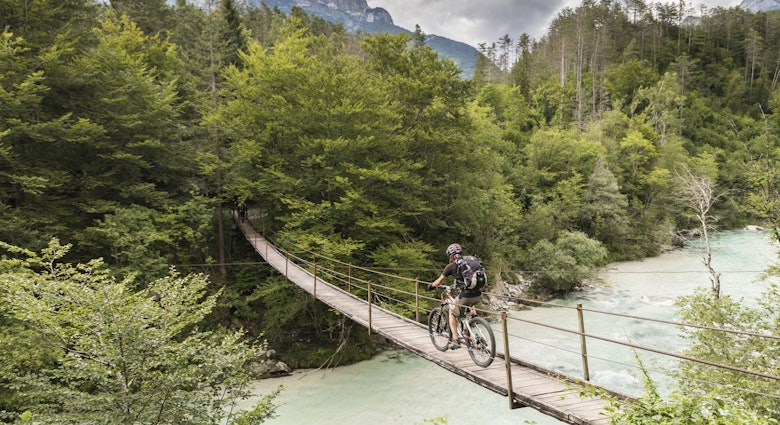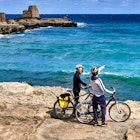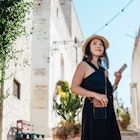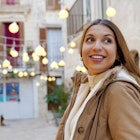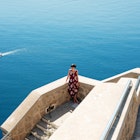Slovenia is a borderland, marking the transition between Mediterranean Europe, Alpine Europe and the Balkans. It's a complex synapse between cultures and topographies, perched where the Adriatic and Eurasian tectonic plates collide, drawing traditions from both sides of the divide.
If this is your first visit to Slovenia, you’ll find landscapes born of the Alps and the Adriatic, and a culture that’s an amalgam of all of its neighbors – Italy to the west, Austria in the north, Croatia and the Western Balkans to the south and Hungary to the east.
It's no surprise that travelers are attracted to this famously outdoorsy Central European country. Travelers are often drawn to the edges – to points where coastlines meet the sea, where mountain ranges greet the sky, and where heritages intertwine. Slovenia’s complexities and contours all contribute to its allure.
Navigating this country – small in size but a heavyweight when it comes to adventure and discovery – isn’t difficult, but understanding how to do it better will only increase the pleasure of traveling here.
Planning your trip to Slovenia
Here are some things to prepare for before you reach Slovenia.
Start with “Good Day”
Slovenes speak Slovenian, and as this is a Slavic language, it can be a little challenging for English speakers. Monoglots need not worry, however. Since Slovenian is rarely spoken outside Slovenia, locals often speak English well, and German and Italian are also widely spoken. It still doesn’t hurt to have a few local words on hand. Dober dan is “good day,” pro sim is “please,” and hvala is” thank you.”
Take advantage of tourism cards
Travelers are often reluctant to invest in city tourism cards out of skepticism about the savings possible from free or reduced prices. In Slovenia, that's a mistake, as these cards are good value when you consider the discount provided at most of the spots you’ve come to see. They also serve as a list of the area’s top sights to tick off your list. In most cases, the card will pay back your investment after only a few sights have been visited.
Many spots around Slovenia have discount-filled tourist card schemes, including Ljubljana, Maribor, and Bled, and prices are very reasonable. The 48-hour Ljubljana Card costs €39, for example, but that price allows free entry to many of the main attractions and even includes a free bus ride to and from the airport.
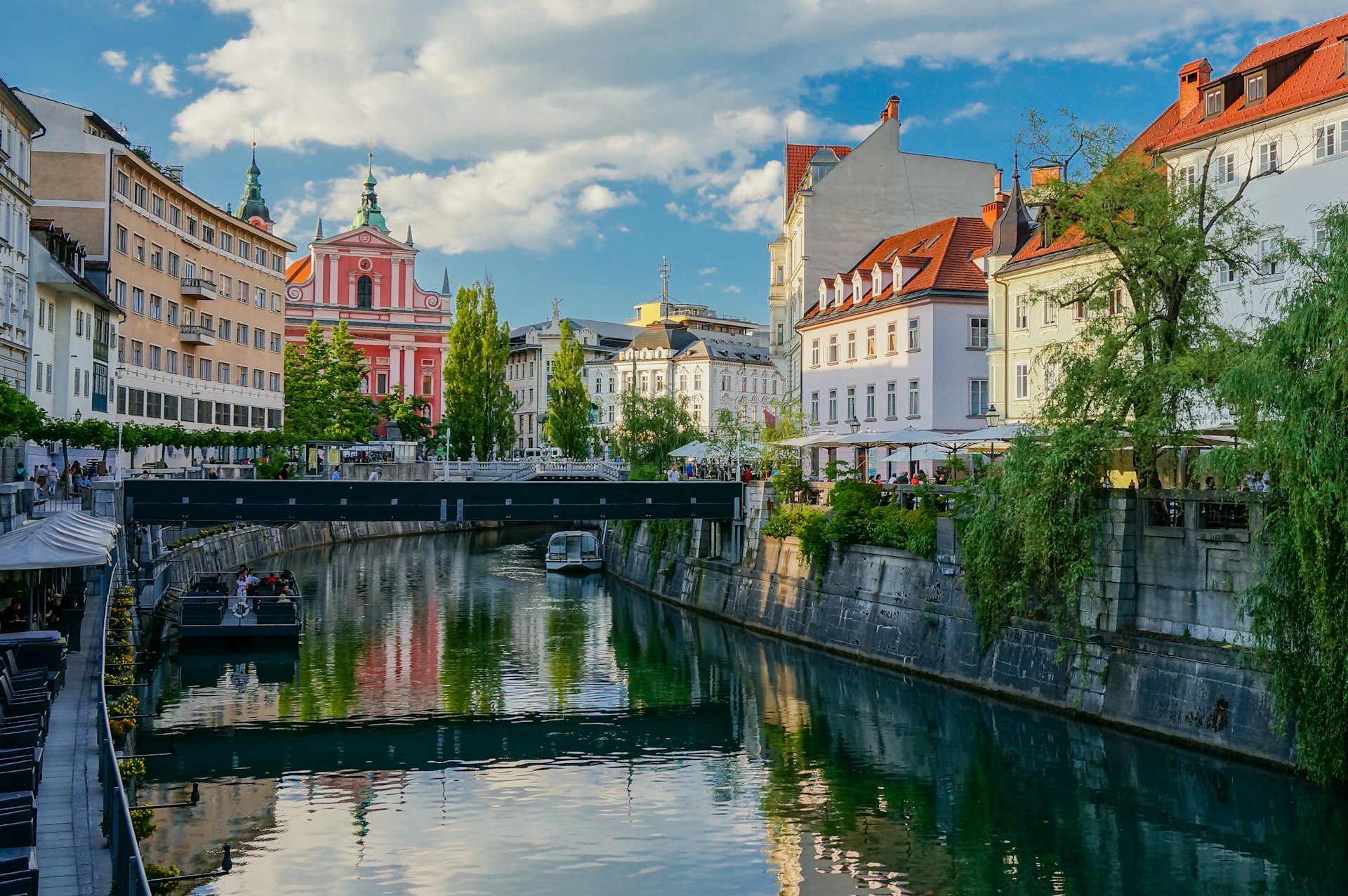
Plan to visit all areas of the country
It's easy to get swept up in the beauty, proximity, romance, and popularity of Slovenia’s western half. Attractions stuffed into this area include the capital, the Julian Alps, the Kamnik-Savinja Alps, the Soča Valley, Lake Bled, Lake Bohinj, the country’s Goriška Brda wine communities, the hilly Karst Region, and the Adriatic Coast.
But for those who want to really experience Slovenia, it would be a travesty to miss the nation’s eastern side. Culturally leaning towards the Balkans, this half of the country is just as interesting and beautiful, and because of the buzz surrounding western Slovenia, it's also less crowded.
Start exploring in Maribor and Ptuj, connected by the Drava River in the northeast corner of the country. You'll find a slew of spa and wellness resorts peppering the country’s central-eastern region that are well worth unwinding in. And for history buffs, no trip to Slovenia would be complete without a trip to the Sava River in the southeast, where dramatic castles punctuate the landscape.
Etiquette in Slovenia
Break the ice by speaking to locals
Slovenians won’t immediately say hello to strangers like Americans often do. That doesn’t mean they aren’t friendly, just a little reserved. However, one of the chief joys of being in Slovenia, especially in mountain villages, is speaking to the locals for tips on things to see and do.
Making contact is not just about saying hi, it’s also a great way to learn experientially about the country. Travelers with a penchant for trekking in particular will benefit from directions and tips from locals, and sharing a cup of coffee or a glass of schnapps, is part of the camaraderie of hiking in Slovenia. Slovenes are, by nature, dedicated to their homeland, so every encounter is an opportunity to learn the lie of the land.

Walk or cycle when you can
Slovenes are an active and practical bunch. Where possible, citizens often prefer to get around on foot or by bicycle, rather than always jumping behind the wheel. Using your own power to move around isn't just a good way to keep fit, it's often faster and more convenient than waiting for public transport.
Travelers unused to a place that makes full use of its bike lanes will probably get an etiquette lesson soon after arriving. Walking accidentally into the designated cycle lanes will earn you a bell ring and potentially a stiff word or two.
Conveniently, there are bike rentals in many spots around the country if you want to join the throng. In the Slovenian capital, the public BicikeLJ bicycle-sharing system makes it easy and cheap to explore without ever putting a key into a car’s ignition. Tourist information offices, hotels and outdoor activity operators rent out decent quality mountain bikes for highland exploring.
Mix it up in Ljubljana
Ljubljana is rightly one of Slovenia's top destinations, with incredible sights all over the city but don’t leave without taking in Ljubljana’s alternative side. From the well-touristed city center, leave the scenic square of Prešernov Trg and head east along Trubarjeva cesta, passing busy street food establishments, cafes, and bars.
Continue on to the Metelkova area of town, which has become Ljubljana's de facto art district. What were once military barracks have today been reinvented as studios and hedonistic nightclubs. You'll also find two of the most interesting museums in the country – the Museum of Contemporary Art Metelkova and the National Museum of Slovenia – Metelkova.

Take advantage of Slovenia's free itineraries
Slovenia's tourism authorities have created a number of free routes for independent travelers, with the goal of equipping DIY explorers with the tools needed to visit less touristy spots around the country in a responsible and sustainable way, often by hiking or cycling.
The advantages for travelers are obvious. These routes come with abundant free and easy-to-use information that will get you off the beaten track, providing a chance to see rural Slovenia up close with minimum impact. The country benefits too – visitors moving at human speed are naturally dispersed, alleviating traffic and over-tourism problems in more popular locales.
Perhaps the top itinerary is the Juliana Trail, an easy-to-follow hiking path that circumnavigates Triglav National Park. The Bike Slovenia Green: Alps to Adriatic cycling route rolls from Kranjska Gora to the Adriatic, while the Walk of Peace trail treks along the Soča River – one of Slovenia's most beautiful spots for hiking and kayaking.
Cyclists with strong calves should try the newly launched Slovenia Road Cycling Loop, which takes road warriors around the country to the best climbs and descents. And for multi-discipline types, the Slovenia Green Solčava Panoramic Route combines both cycling and hiking in the mountains north of Ljubljana.

Health and safety in Slovenia
If you plan to trek off the beaten track, there are a few things to know.
Sort out your gear before you hit the trails
If you are planning to hike in Slovenia – especially in mountainous areas above 2000m (6500ft) – it's important to carry the right equipment. Regardless of your normal outdoor practices back home, if you want to challenge yourself with some mountain summit attempts, pack and use a mountaineering helmet. Rockfalls are a risk, whether you are climbing or trekking.
If you have more ambitious plans to tackle multiple via ferrata routes while you’re here, invest in your health and safety by renting or buying a harness for clipping in. Gear is usually available for rent in areas with via ferrata cables, but you can get onto the routes more quickly with your own harness, lanyards, gloves and helmet.
Trekking safely
While some Slovenian trekking routes are well-trodden, the country has more than 9000km (5590 miles) of trails, and it's easy to get off the beaten path, particularly at higher elevations. Always tell somebody where you are going, trek in a group (or a pair) and check the weather conditions and the latest information about the route before you set off. In an emergency on the trails, contact the Mountain Rescue Association of Slovenia (GRZS) by dialing 112.
You may also like:
6 incredible places to swim in Slovenia: From beaches and sand bars to Lake Bled
Get to know Chef Ana Roš in 22 questions
The best things to do in Slovenia from the mountains to the sea

